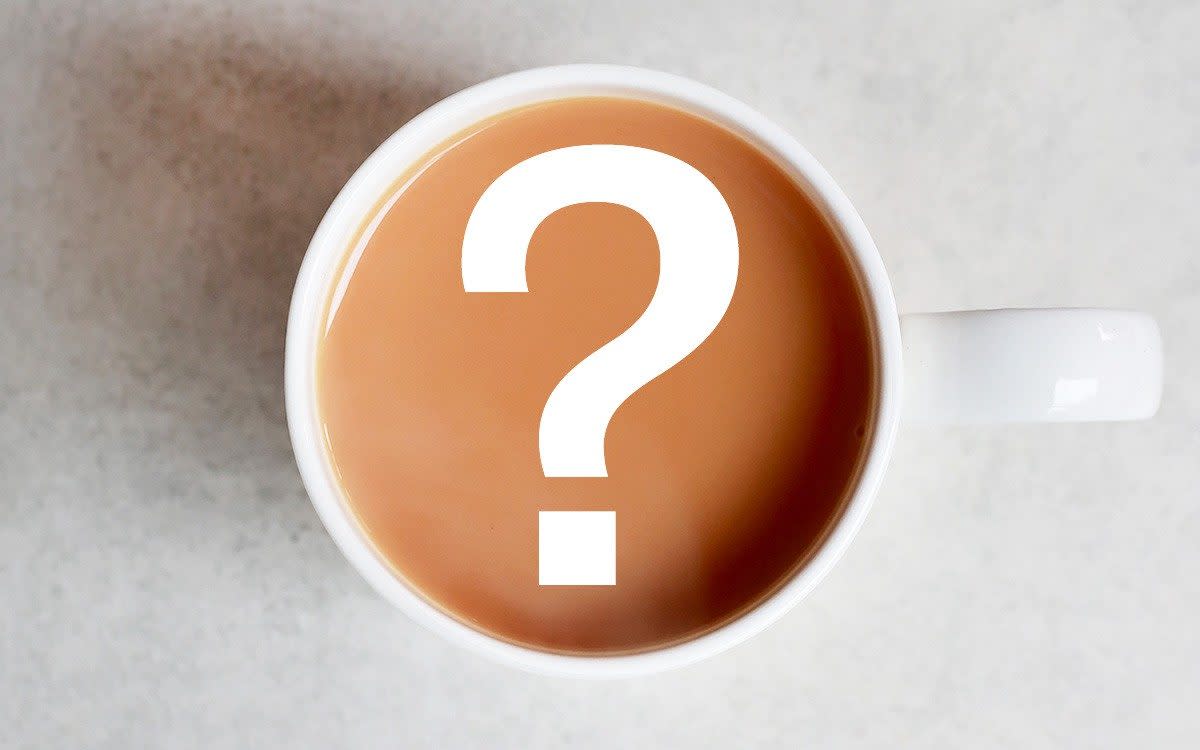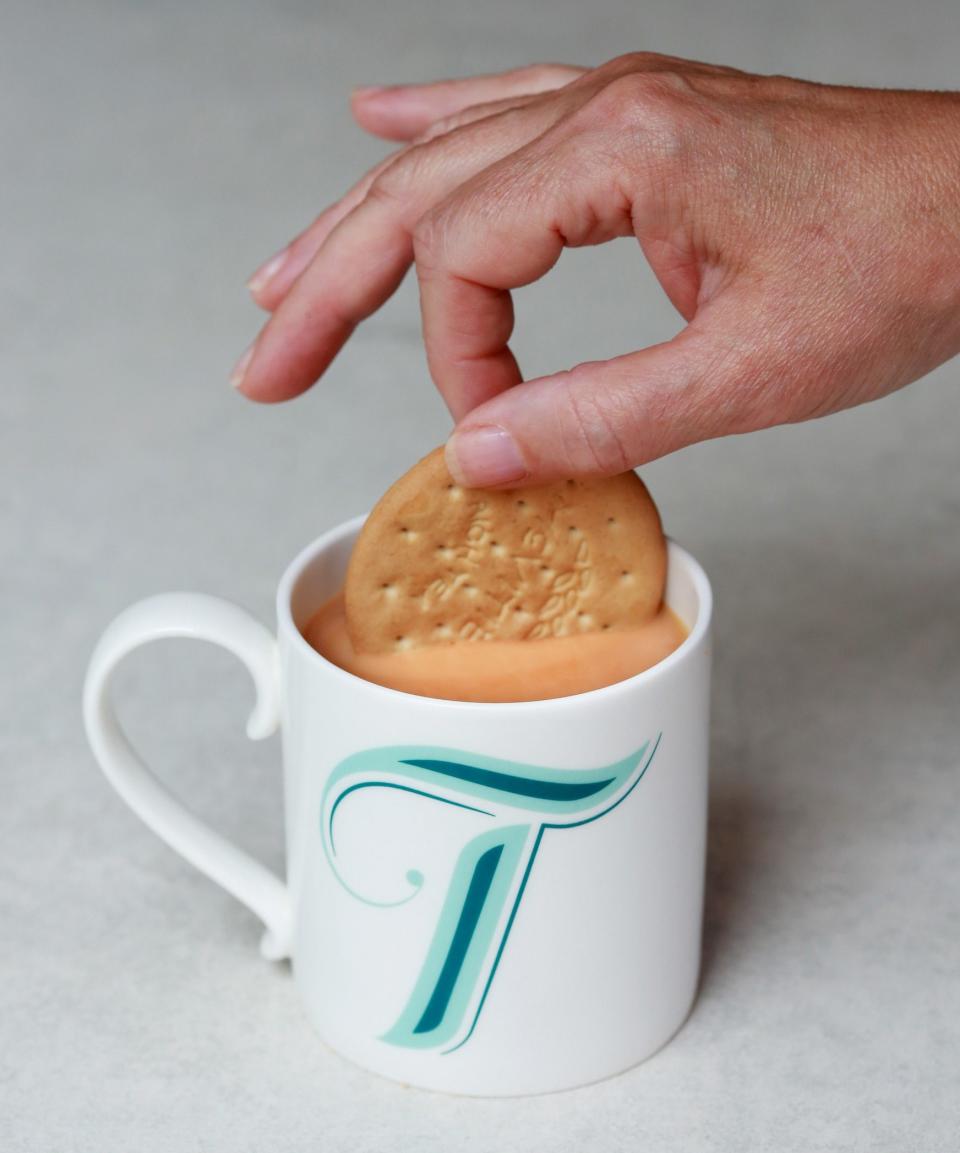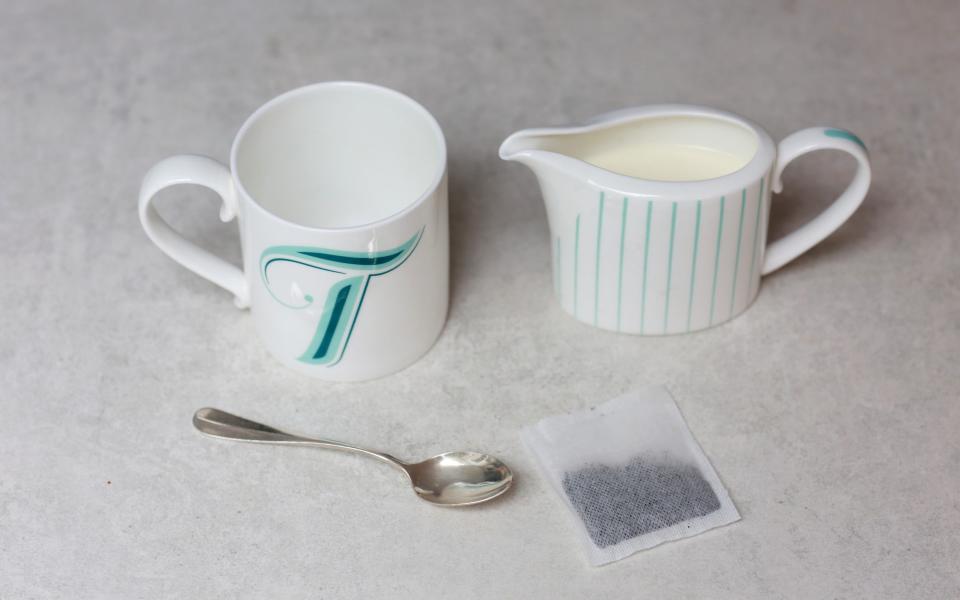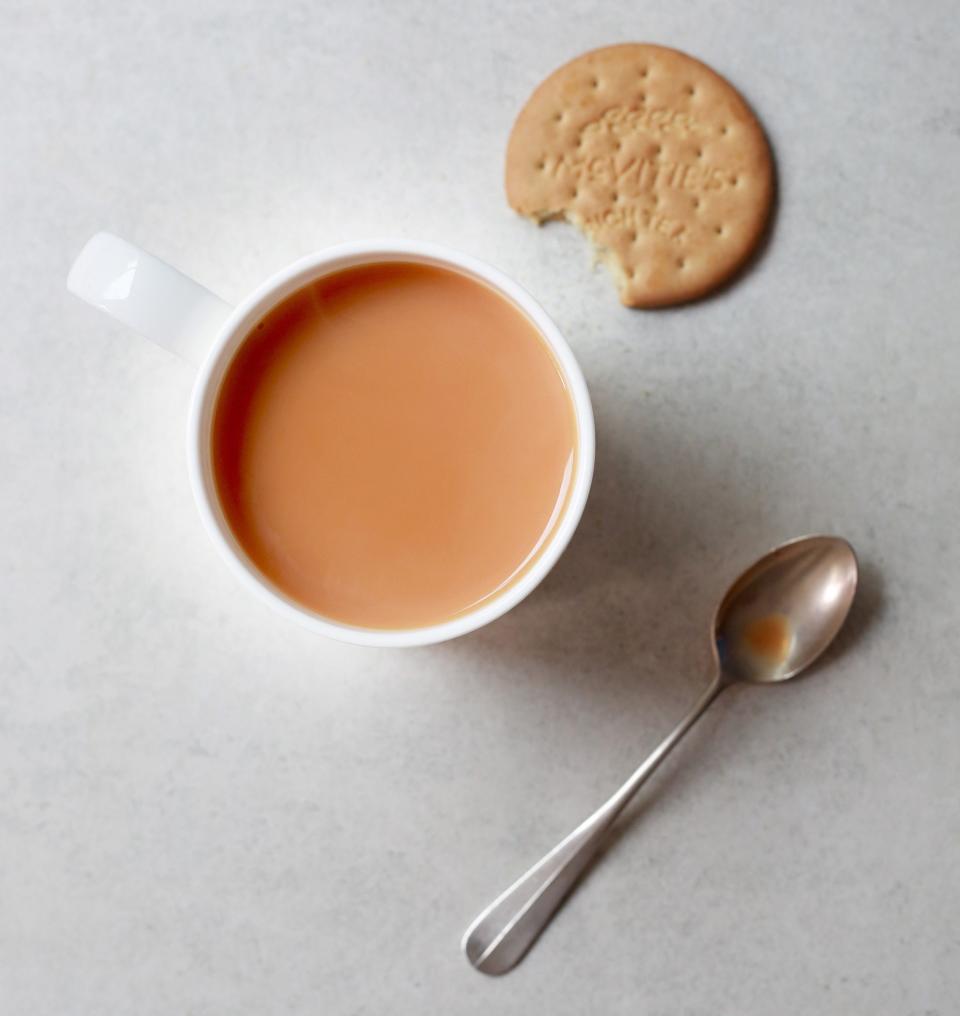The great tea debate is settled: this is the formula for the perfect cuppa

Tea is one of Britain’s great unifiers. Four in five of us drink it, according to a recent YouGov survey, and 37 per cent of us sit down to a cup several times a day. Nigella Lawson famously drinks up to 12 and (along with many Telegraph readers) has been known to travel with her own mug and kettle. Such is the beverage’s significance that the offer of a cup is expected in almost every social scenario. Imagine 11am without one.
Imagine, also, sipping a cuppa with a pinch of salt – the recommendation made by American chemistry professor Dr Michelle Francl to bring tea back from the brink of bitterness. Dr Francl, author of Steeped: The Chemistry of Tea, combined a search of existing studies with her own DIY analysis to determine how to produce a better cup, concluding that four minutes is the optimum brew time.
But we are a busy nation with limited time. This is why PG Tips, one of Britain’s best-known brands, spent a not-insignificant £50 million developing a new product in 2023. Research by the company found that people spend less than 60 seconds letting their tea brew (some less than 30 seconds), and so it crafted a new blend, bag and look to deliver a quicker cuppa.

PG Tips marketeers claim their new tea bags are “the optimum size”, allowing the ground leaves to “rapidly infuse”, but compact enough to ensure bags don’t fold in on themselves. The cultured among us know that the latter simply will not do, as it impairs the way the leaves interact with the boiling water.
But it begs the question, what other elements determine consistency – and, indeed, perfection – in a cuppa?
Here, with the help of leading tea experts, I set out to establish the formula once and for all.
The cup – or mug
Neil Smythn, from Exchange Coffee (don’t be fooled by the name, they trade in tea, too), supplier to Michelin-starred restaurants, pubs and consumers alike, doesn’t care for bone china. “I like an old-fashioned stoneware mug, with thick walls,” he says. “It keeps the tea warmer for longer.”
But Holly Grinstead, of the Rare Tea Company, believes porcelain is unrivalled. “I like a porcelain cup, with a thin rim for a nice lip-feel,” she says. “It’s also important to consider the size – a 150ml teacup and saucer is nostalgic,” she suggests, “and very British.”
For drinks journalist Millie Milliken, the choice is circumstantial. “If I’m using loose leaves in a teapot, then it’s a teacup and saucer. If it’s a tea bag, though, always a mug.”
I myself prefer a thin-rimmed, bone-china number, but everyone agrees on one thing: never an oversized Sports Direct mug.
The tea – loose-leaf or bag?
Grinstead favours tea leaves, believing everything from the terroir in which the tea is grown to the size of the leaf is integral to a good cup. She points out that most tea bags are made with “fannings” – “essentially dust, the poor-quality ends of tea leaves crushed up.” And she prefers precision: “English Breakfast, the most popular choice in Britain, just means a blend of black teas. To select leaves of a single origin, whether oolong, Darjeeling, or Assam, raises the bar.”
George Orwell, who wrote an essay on the perfect cup of tea, preferred his leaves unfettered: “The tea should be put straight into the pot. No strainers, muslin bags or other devices to imprison [it].” Ottilie Cunningham, tea buyer at Fortnum & Mason, extols the virtues of leaves, too, believing them “best for flavour delivery”.
Smythn, though, points to that clock ticking by. “I like loose leaves, but I don’t take the time, generally,” he admits. For a speedy solution, it’s got to be Barry’s, or Twinings Assam. Though, he says, “I quite like playing around with blends, sometimes mixing two bags.” Try Earl Grey and Assam. It works brilliantly.
Should you use a teapot?
Tea is an art form. To that end, Fortnum & Mason sets out a five-step process on its website, and within this, a teapot is a crucial element. Like Orwell, F&M advises the pot is warmed before use. “Fill the kettle with fresh water from the tap. As it approaches the boil, warm the teapot by rinsing it out with hot water. Treat the teapot to one rounded teaspoon (yes, or caddy spoon) of tea leaves for each person and one extra spoonful ‘for the pot’.”
The communal and welcoming aspect of a teapot is appreciated by Sonia Louro, hot beverages expert at Restaurant Associates, but she only uses a pot when hosting. “A teapot is nice when entertaining guests, but day-to-day, a tea bag and mug is enough,” she stresses.

While Masaki Sugisaki, chef-owner of London restaurant Dinings SW3, doesn’t believe in pots at all, preferring to deal directly with the bag in order to “squeeze out as much of the brew as possible to the point where it’s bitter to taste”, it is generally thought a teapot is best when refreshing a crowd – how else might we show off our newest tea cosy? In which case, the bigger the pot, the better, Smythn argues, because it allows the leaves to “unfurl, expand and move around”.
The brewing process
Grinstead explains that the perfect temperature for the water depends on the tea. “Black tea is the strongest, so tannins aren’t lost if the water is boiling. The lighter the tea, the lower the temperature.” Jamie Oliver’s team is even more precise. “Most black teas need about 96C and green teas 70C,” says Becky Sheeran. If you don’t have a kettle that displays the temperature, use a thermometer, she says.
Alternatively, boil a kettle and simply wait for 30 seconds to avoid any unwelcome intensity. I favour the boil and wait a moment method. But there are other key considerations. One, if you live in a hard-water area, use a water filter, which reduces the chances of a “scum” developing, where the tea looks more like a badly-kept pond than anything refreshing. Two, never reboil the water. Doing so lowers the oxygen levels and oxygen is essential in teamaking.
Brew time
“Anywhere between two and three minutes with loose leaf” is Grinstead’s advice; by that point, all the flavour will have been extracted. Those waiting any longer are wasting time, then? “Pretty much.” For tea bags, Milliken says, it’s “three minutes tops, so I still have a pretty punchy tea even once I’ve added milk.” Oliver’s food team confirms this. “If you leave [the tea bag] in for too long, it will oversteep and will taste really bitter.” They are strict about fiddling, too: “Don’t stir and definitely don’t squeeze it.” For me, a two-minute brew is just the ticket.

Milk in first or last?
Is this even a debate? Everyone I speak to accepts the story that milk was only ever poured in first by the aspirational middle-classes of old, intent on mimicking high society with fine teacups and saucers, but finding their cheaper knockoffs would crack under boiling water.
But, wait a moment. Fortnum & Mason offers an alternative view: “Putting the milk in first means that the fat in the milk emulsifies in a different way when the tea is poured, which does change the flavour of the tea, giving it a more even, creamier flavour.”
The ideal colour
Most identified anywhere between the colours of “caramel” or “bronze” as the ideal colour – a strong, punchy cup, replete with caffeine and flavour, but not one marred by an overpouring of milk or that began with an underbrewed tea.
A widely-held view is summed up by Milliken, who calls for hers to be “dark, but with a good slug of milk – the colour of toffee”. It delivers a drink that’s “strong and well-rounded, not too tannic, but with a bit of bite”.
Finally, any sugar?
I’ll take this one. Absolutely not. After all, aren’t we sweet enough?


